#Symbolism in Mahabharata
Explore tagged Tumblr posts
Text
सुनो द्राैपदी ! शस्त्र उठालो अब गोविंद ना आएंगे... छोड़ो मेहंदी खड्ग संभालो खुद ही अपना चीर बचा लो द्यूत बिछाए बैठे शकुनि, ...मस्तक सब बिक जाएंगे सुनो द्राैपदी ! शस्त्र उठालो अब गोविंद ना आएंगे...
कब तक आस लगाओगी तुम, बिक़े हुए अखबारों से कैसी रक्षा मांग रही हो दुःशासन दरबारों से स्वयं जो लज्जाहीन पड़े हैं वे क्या लाज बचाएंगे सुनो द्राैपदी ! शस्त्र उठालो अब गोविंद ना आएंगे...
कल तक केवल अंधा राजा, अब गूंगा-बहरा भी है होंठ सिल दिए हैं जनता के, कानों पर पहरा भी है
तुम ही कहो ये अंश्रु तुम्हारे, किसको क्या समझाएंगे? सुनो द्राैपदी ! शस्त्र उठालो अब गोविंद ना आएंगे...
- पुष्यमित्र उपाध्याय
Listen Draupadi! Pick up your weapons, now Govinda will not come... Leave mehndi, hold the sword save yourself your own rip Shakuni sat down to play dice, ...all the heads will be sold Listen Draupadi! Pick up your weapons, now Govinda will not come...
How long will you keep hoping, what kind of protection are you seeking from the sold newspapers, from the courts of Dushasan, how will those who themselves are shameless save your honour, listen Draupadi! Take up arms, now Govind will not come...
Till yesterday the king was only blind, now he is also deaf and dumb. The lips of the people have been sealed and their ears are under guard. You tell me these tears of yours, what will you explain to whom? Listen Draupadi! Take up your weapons, now Govind will not come...
- Pushyamitra Upadhyay
#Draupadi#Govind#Shastra#Cheerharan#Status of Women#Indian Epics#Mahabharata#Feminism in Mythology#Women Empowerment#Kauravas and Pandavas#Shakuni#Dushasana#Krishna#Nari Shakti#Self-reliance#Mythological Poetry#Courage and Valor#Ancient Literature#Duryodhana#Women in Indian Epics#Symbolism in Mahabharata#Justice and Dharma#Poetic Justice#Epic Heroes#Sacrifice and Struggle#Nari Maryada#Indian Mythology#Women in Literature#Feminist Poetry#Mahabharata Characters
4 notes
·
View notes
Text
Arjun: *clenching his fists* Fight me!
Krishna, standing behind him, sudarshan chakra in hand: *mouthes* Do not.
#ik Krisn would have prolly let the person fight Arjun#cuz Krishna knows Arjun can take him easily#but hey its just my hc#I also wanted to symbolize how Krishna as a god is always there to protect the humans (arjun#ANYWHO#mythology memes#incorrect quotes#incorrect mythology#incorrect mythology quotes#hindu mythology#desiblr#hindublr#krishnablr#krishna#krishna x arjun#lord krishna#arjuna#incorrect mahabharat quotes#mahabharat#mahabharata#the mahabharata#hinduism
435 notes
·
View notes
Text
uttara ashadha 𓃰
this nakshatra relates to the myth of ganesha, the elephant headed son of shiva who broke off his own left tusk and used it to pen the mahabharata as is was being dictated by vyasa. another name of ganesha is ekdanta, one-toothed
uttara ashadha natives make prolific writers - their letters and writings are often published highly regarded and studied, their works are nuanced offering layered symbolism and fraught with various subtexts. they have a penchant for words and possess a natural eloquence and musicality (the mahabharat is written in poetic meter and essentially meant to be sung)
uttara ashadhas make excellent songwriters and scriptwriters and have a natural inclination for music, poetry, prose, wordplay and all professions pertaining to writing, including policymakers, scribes, copywriters, screenwriters, etc.
ganesha had agreed to pen the mahabharata on the condition that vyasa narrate it without pausing
uttara ashadhas possess fast paced minds and often produce large bodies of work in relatively short amounts of time, putting forth several magum opuses in their lifetimes
in turn, ganesha was instructed to only pen a verse once he fully understood it
leading ganesha to take pauses from writing and contemplate what was being narrated by vyasa, reflecting the highly contemplative, reflective and analytical nature of uttara ashadha
this nakshatra spans the 9th house of Sagittarius (dharma - righteous action) and the 10th house of capricorn (artha - prosperity and purpose) uttara ashadha is of the sthira (stable, sturdy, fixed, foundational) quality and kshatriya (ruling, warrior) caste indicating an inclination for positions of power and authority, roles in government, finance, policy making and nation-building, working for the public in some way, being a public servant.
saturn's rashis, capricorn and aquarius, in essence serve as the backbones of society, the machine which keeps it running. aquarius, co-ruled by rahu represents its advancement, progress and future and capricorn is the foundational essence which holds it together — uttara ashadha, shravana and dhanishta relate to upliftment and harmony based on divine connections and the sharing of a common goal
59 notes
·
View notes
Text
A subtle and low energy form of worship inspired by Chaos Magick and Sigils
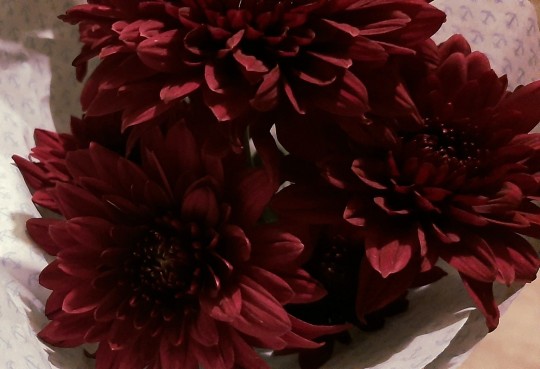
So this one's a bit of basic Chaos magick I've been using for years to charge my sigils. It's slow but steady form of charging sigils that also adds a more 'personal touch' compared to charging with the moon and/or sun. Basically you just put the sigil on a body part with the intention of it being worship.
I am not the first one to do this but I figured that it might be good to share this knowledge to more people.
The basic formula is your God's symbol/ a correspondence of them on or against your body with the intention to dedicate each action of that body part to them.
A choker with a bird pendant dedicating every word you say to Hermes. (Good for presentations and for shit talking with the boys.)
Some examples:
(helpol specific because I'm more familiar with them at this moment)
A rose on your chest,/shirt/bra/binder with the intention of dedicating every heart beat to Aphrodite. (Low energy, more consistent and makes you feel hotter than usual. ;) )
Athena's name written on your finger to dedicate each word written to Her. (Good for homework though try not too write anything too stupid (very difficult for me).)
Ares's symbol painted on the bottom of your exercise shoe's inner sole with the intent to dedicate workout to Him. (Who knows? He might join you (and put you to shame).)
Ways to mark yourself:
I used to use this method with the elemental alchemical signs as well back when I worshipped/drew power from them more often. Holy book versus, sacred numbers, ect. can also work. Heck, maybe even write the entire Mahabharata on yourself.
Non-toxic marker / pen
Water / soil / ash / powder of ground herbs or flowers (non-toxic)
Temporary tattoo / Henna / actual tattoo
Sewing / embroidery / iron-on patches / fabric marker / washable fabric crayons
Honey / milk / yogurt / lotion (all good for the skin)
Face paint / graphic eyeliner / make up (especially foundation you're going to blend)
Just tracing the symbol with a finger
Suggestions
Tip: if you're going with more subtle correspondence (like a drawing of their animal) as opposed to just writing their name or symbol, it's good to do a ritual/ a small prayer to inform them. Just telling them can work too if you're too exhausted for those.
The same effect can be achieved with key chains, stuffed toys, taglocks, ect but I personally like this method as it's something I'm familiar with. It's also harder to forget to do bring something along if it's on your body (yes, I am calling myself out). It also feels more personal.
Disclaimer: Please only do this for gods/entities you know and have a relationship with. I would also advise against doing this to a god that has rejected/not answered your requests to work with them. And please don't mark yourself with a god that you straight up do not know anything about.
I sometimes put wellness sigils for my loved ones on my pulse point(s) or along my chakras with henna. It's slow but with time, it's really builds up.
More rambling
Nowadays, I always make sure to always have the sigils for Lord Hermes and Lord Ares on my foot so I can dedicate each step I take to them. I usually dedicate longer walks to *runs to them but I feel like having a physical 'anchor' helps me concentrate the energy and intent. It also helps if I just plain forget to dedicate a walk to them.
*Disclaimer: author of this post only runs for the bus or because they're late. In no way are they healthy nor disciplined.
In addition to all the worship stuff, it also feels comforting to having something of my loved ones near me/ on me. It reminds me that I am (somehow) loved and that there's something to fight for. Though I might just be getting sentimental in my young age.
So that's my suggestion for you lovely people. I hope to helps inspire someone or something. If anyone has any other suggestions, ideas or constructive feedback, please let me know.
#that blurry picture of flowers was taken by me#deity work#deity worship#chaos magick#sigil magic#sigils#helpol#hellenism#hellenic polytheism#witchcraft#I hope this is at least semi coherent#hope this helps#mwah#hermes deity#ares deity#ares worship#hermes worship#athena deity#athena worship#aphrodite deity#aphrodite worship#I'm tempted to tag the entire pantheon but I am also too lazy for that
83 notes
·
View notes
Text


Shiva and Vasuki Talon Abraxas The serpent coiling around Shiva’s neck is not only a historical symbol but also a rich metaphor for various psychophysiological processes. In the context of Hindu spirituality, the serpent is often associated with Kundalini, a dormant energy believed to reside at the base of the spine. When awakened, this energy ascends through the chakras (energy centers) to reach the Sahasrara (crown chakra), leading to spiritual enlightenment and self-realization.
This concept of Kundalini aligns with the psychophysiological processes that modern psychology explores, particularly in the realm of depth psychology and psychoanalysis. The coiling of the serpent around Shiva can be interpreted as the containment and control of potent unconscious energies, symbolizing the integration of these forces into conscious awareness. This process mirrors Carl Jung’s notion of individuation, where the integration of the unconscious with the conscious mind leads to a more complete and self-aware individual.
Furthermore, the serpent’s symbolism extends to its representation of cycles of life, death, and rebirth. This cyclical nature is reflective of the psychological process of continuous growth and transformation, akin to the shedding of a serpent’s skin. The shedding process can be seen as a metaphor for the psychological phases of letting go of old patterns and embracing new ways of being. Navnag Stotra : Powerful Mantra Of The Nine Nagas
Anantam Vasukim Shesham Padmanabham cha Kambalam Shankhapalam Dhartarashtram Taxakam Kaliyam Tatha Etani Nava Navaami Naganancha Mahatmana Sayam Patenityam Prathahkaale Visheshita Tasya Vishabhayam Naasti Sarvatra Vijayaa Bhaveth
The 9 Naag Devatas are Ananta, Vasuki, Shesha, Padmanabh, Kambal, Shankhapal, Dhrutrashtra, Takshaka, and Kalia. The Nav Naga Stotram is a powerful Mantra dedicated to these 9 Nagas. People chant it on Nag Panchami, Naga Chaturthi, and Shasti days. The Ramayana, Mahabharata, and other religious texts like the Puranas have many references to the Nagas.
36 notes
·
View notes
Text
Devasena and Kali parallels
I’ve seen some posts about how Amarendra is associated with Shiva imagery, which made me wonder if there are parallels between Devasena and Kali. It wouldn’t be the only inspiration for her character, of course—Rajamouli’s influences from the Mahabharata and Ramayana are well known—but it would be really cool!
Like Kali, Devasena is both nurturing (a mother) and fierce (a warrior).


Kali is associated with time, and Devasena waits 25 years for Mahendra’s return.


(Kali is sometimes portrayed with red eyes and disheveled hair.)
Devasena returns to Mahishmati carrying a severed head (Kali is often depicted holding one). There’s also the scene where Amarendra beheads Setupathy for her.


She receives a tiger skin from Kumara Varma and is compared to a tiger (Kali is often depicted wearing a tiger skin).


She walks over Amarendra’s shoulders (like Kali stepping on Shiva).


She is the one to finally kill Bhallaladeva (Kali as a force of destruction) and her son is the one who ushers in a new era of peace and prosperity (the other side of Kali, associated with creation and renewal).


SHE IS SO AMAZING I LOVE HER SO MUCH!!!!!!!!! QUEEN!!!!!!!!!!!!!!!!!!!!!!
Then I realized something else! A goddess that in some ways resembles Kali, although she isn’t named, actually appears in the movie: Amarendra sacrifices his own blood to her rather than sacrifice a bull.

(She is holding a severed head, a bowl of blood, a curved blade and a trident, but she doesn’t have the right number of arms to be Kali, and there’s no garland of severed heads.)
After the battle, Amarendra is framed like this:

It’s like Rajamouli wants you to notice a connection between him and this goddess (this is before Devasena ever appears).
And when she does appear... There is another scene where Amarendra chooses not to hurt a bull and instead drops his weapon, and gets hurt as a result, and it’s explicitly about appeasing Devasena’s anger.


Devasena is literally standing in for the goddess from the other scene!!!!!!!!!
The level of symbolism and attention to detail in these movies is amazing.
30 notes
·
View notes
Text
Re-watching Star Plus Mahabharat (3/?)
DISCLAIMER: Whatever I say in this is about the CHARACTERS as per the way this SHOW showed them. The show=/= The Ved Vyasa Mahabharata. Don't want any more controversies, lmao. IF I mention any canon event, I will state IT. So pls, DNI if you can't handle a joke/criticism.
GUESS WHO IS BACK, BITCHES
Bhishma knows what he is doing, eh? There is absolutely NO reason for him to bring an army for ladki dekhana tbh
The soldier saw everything except the flag of the army LOL
If I were Subala, I would fire this shit right away
Why do these ppl say cringe stuf ToT
I mean, I am sure ppl didnt talk like that in old times
Um, Shakuni's wife is right tho? Accepting that you have a high chance to lose is not losing hope na. Matlab ki you cant have fake confidence
Besides, if Gandhari's parents didnt feel like this, then they wouldn't do what they are about to do
Gandhari's maid is present in war discussions between the royal women waah
Now Gandhari is going to fight waah waaah.
Gandhari thinks that her fighting will solve things
Um, girl. So many warriors and soldiers will be fighting in war. If Gandhar loses DESPITE their experience, then one inexperienced soldier being a part of the fight will not change the result na
Krishna is back and he is talking mysteriously again NO
Ah yes. Bhishma wants to "befriend" Gandhar after bringing a huge ass army with him. Bro, read the room.
Not Subala calling Gandhar a servant of Hastinapur ToT
Bro this is why Bhishma goes around claiming brides of all kingdoms randomly BECAUSE OF THIS LACK OF SELF RESPECT
Bhishma saying "vivah ka prastav" but specifying the prince is js-
He genuinely feels that Dhri is an eligible bachelor? Being blind already makes his chances low
Would these ppl accept a blind princess for Pandu or even Dhritarashtra? It also does not help how Dhritarashtra is a shitty human being.
Bro someone give those ministers a place to sit ToT
In MB, every single princess is the most beautiful and virtuous in the world, while every prince/king is a bull amongst men. LOL
Bhishma, I am sure any parent would prefer if their son-in-law was good natured and kind to their daughter, instead of being a good warrior
Yes, Dhritarashtra is capable in every way, except for behaving nicely with anyone -_-
In canon too, he was a shitty husband.
NGL, but Dhritarashtra AND Pandu both were really shitty.
Does Dhritarashtra not know how to be happy?
Ok, you know the shastras, but have you, er, implemented them in your daily life?
Pandu why are you so sweet TvT
TBH this marriage will only bring Gandhari pain and disrespect
SHAKUNI IS HERE YAY FINALLY SOME ENTERTAINING PERSON
I genuinely wish to know if Hastinapur and Bhishma would accept a blind daughter-in-law for one of their princes.
Can't believe that Shakuni is the only one seeing what's wrong here.
See, being with a person with special needs is a huge thing. Some people may not be up for that level of sacrifice, yk? And srsly, why should Gandhari make that sacrifice, seeing that uh...Dhritarashtra does not love her? Sacrifices should be for ppl who you love and who love YOU back, not js because their uncle is Bhishma-
And what does Gandhar get out of this? Prevention of war? Basic rights? Didn't know they are a cadet of the Kurus
The scene of the fireflies flying out of the broken glass symbolizes the end of Gandhari's innocence and happiness, as well as permanently tainting her relationship with her dear brother because of what he is about to do. In this essay I will-
Seeing Shakuni being a feminist lowkey was not on my watchlist
I feel that even if Bhishma hasn't threatened the Gandharas directly, they still feel that he would attack them if they refused. Perhaps he should have, idk, REASSURED them that "oh guys our relations wont be affected if you refuse! :>" but nooooo-
Gandhari, sweetie, I can treat you better, better than he can (iykyk)
The return of Starbharat's cryptic and weird ass metaphorsTM
NO WOMAN HAS A NATURAL PUFF IN HER FULLY OPEN HAIR
i hate the hairstyles in this show
SHAKUNI'S EXPRESSIONS ARE GOLD
not bro going like : oh FUCK when Gandhari agrees to the rishta
Sweetu bacha, dont feel sympathy for your future pati. He is an a-hole.
is...is that a Rajasthani folk dance...in..in HASTINAPUR?!!!!
I remember seeing Bharatnatyam in one of the previous coronations T-T
Why is Dhri touching himself like that ToT
Satyavati has a permanent bitch face LOL
Why are there trees INSIDE the court?!
WOW so, the Kurus want a girl to accept their blind prince w/o even knowing him, but they won't accept her if she blindfolds herself to understand and bond well with her husband?
Satyavati being a bitchy dadiya saasTM
I hate Dhritarashtra
Tags for reach since I'm sure yall forgot this series exists TvT: @zeherili-ankhein @desigurlie @ahamasmiyodhah @theramblergal @ishaaron-ishaaron-me @krsnaradhika @rhysaka @sanskari-kanya @randomx123 @sambhavami @priestessofuniverse @krishna-priyatama
#mahabharat#mahabharata#hindu mythology#star plus mahabharat#starbharat#starbharat recap#hindublr#krishnablr#desiblr
36 notes
·
View notes
Note
hi! i know you made a post about magha placements but can you tell me a little more about specifically magha venus? i have mine in the 8th and was curious how this would play out. thank you in advance if you choose to answer :)
Magha Nakshatra: Pitri Secrets

the magha nakshatra (early leo) is ruled by:
planet- ketu
sacred animal- male rat
body part- nose, lips and chin
deity- pitris, forefathers of humanity
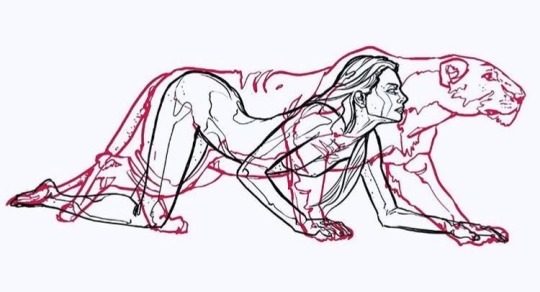
it is ruled by ketu, who is the guardian of our past karmas. wherever you have magha in your chart is where the past karmas are ripe enough to be experienced in this present life.
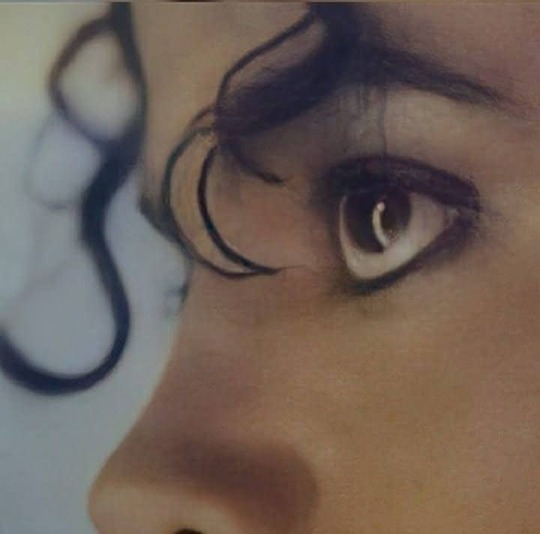
michael jackson- sun in magha
one thing i have noticed is that magha natives can easily become very class conscious. the symbol of magha is the throne, they seek attention and can also observe who is on “the top” of the pyramid and why they belong there. it’s a way for them to gauge what behaviors will help them eventually get on the top.
magha is the type of nakshatra that isn’t accompanied alone. usually magha natives have other indicators of karma, ancestry or forefathers in their chart like: sun conjunct saturn, any planets in 10th house, rahu/ketu in significant aspects, saturn conjunction moon, the magha planet in house 4/8/10, etc.
to completely understand your magha nakshatra, you must check where it’s ruling planet (ketu) is. for example- someone with magha mercury may have their ketu in the 12th house. this could mean they get their knowledge from their forefathers in the form of dreams, intuition, etc.

eva green, magha asc
magha venus can “attract” their ancestry very easily. venus is utter fulfillment and contentment in astrology, hence why you can attract easily using your venus. seeing that your venus is in the 8th house, you may uncover ancestral secrets or gain money through the property/riches of your forefathers. doing any sort of ancestral prayer/acknowledgement will help you understand intimacy and gain shared wealth.
magha mars may have a lot of karmic work to do regarding anger, drive and power. especially if it is conjunction/square saturn or sun. these are very fatherly, masculine planets. it can show wrongdoing of the ancestors on their male part, so now it’s someone’s time to change the tide.
generally, whatever house your magha is in- if you are facing difficulties in it, honoring your ancestors will help you.
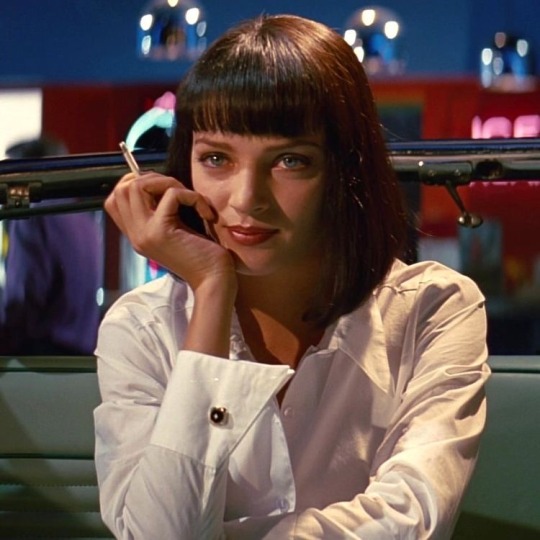
uma thurman, magha asc

helena bonham carter, magha moon
How to Honor your Ancestors:
in general, any sort of acknowledgment to the ancestors can work.
in mahabharata, karna’s soul transcended to heaven where he was offered gold and jewels as food. he asked indra, the lord of heaven, the reason for serving gold as food.
karna had never donated food to his ancestors in shradha, since he was unaware of his ancestry. to make amends, he was given the opportunity to return to earth so that he can perform shraddha and donate food and water in their memory. this period is known as pitru paksha (fortnight of paternal ancestors).
amavasya (new moon) is a great time for magha natives as well.
doing shadow work related to your paternal ancestry / generational trauma helps you connect with yourself
reading about your genealogy, finding more about your ancestry
meditating, making art inspired from your ancestors, etc.
#astro#astro community#astro notes#astro observations#astrology#zodiac#zodiac signs#astrology notes#astrology observations#aries moon#leo moon#leo venus#leo mars#vedic mythology#vedic literature#vedic astro observations#vedic astrology#vedic astro notes#magha nakshatra#astroblr#astroloji#astro placements#vedic chart#vedic texts#ancestry#forefathers#leo mercury#vedic culture#hindu vedic#leo sun
323 notes
·
View notes
Text
I’m only getting around to posting about it now but as soon as Ankarna’s name was said in episode 11 I immediately started looking up to the origin and roots of it (because I’m a massive nerd) and I found some fascinating things. These won’t be particularly organized so enjoy my ramblings
So first things first I looked up just Ankarna and found out that it’s the name of a nature reserve in Madagascar which, while interesting, isn’t particularly relevant or helpful.
So after that I tried looking just just Karna, since the A seemed like it might have been added AND THIS IS WHERE IT GETS FUN.
So Karna is the name of the demigod featured in the Hindu epic Mahabharata. In it, he’s the son of the SUN GOD Surya and princess Kunti, which makes him royal too (that part isn’t super relevant but I do find it fun). There’s more to the epic with a few war stories and lots and lots of family drama, but in general he’s seen as symbol as someone who is rejected by those who should love him, but do not. Which feels incredibly relevant to the whole idea of a neglected god, of an idea that should have a following but doesn’t.
But yeah I find it extra fun considering how many connections Ankarna has to summer and the sun, being that his counterpart in the real world was a demigod of the sun.
One more fun detail is that one of his names (he’s referred to as a bunch of em) is Vrisha, which means “one who is truthful and keeps his vows” which could be nothing but j find interesting.
78 notes
·
View notes
Text

Wrekodara and the Sea Serpent.
Ink, watercolor & colored pencils on paper.
© noxsatvrn
The artwork depicts one scene from Serat Dewaruci, a narrative poem by Yasadipura I, the royal poet of Kasunanan Surakarta based on an even older text, Nawaruci, by a hindu priest Mpu Çiwamurti.
Wrekodara, also known by the name Bhima and Sena is a figure from the Hindu Epic Mahabharata. The 2nd eldest of the five Pandawa born ritualistically through the blessing of Lord Vayu, short-tempered yet kind and compassionate he's the strongest one among his siblings.
In the Pre-islamic Java, Wrekodara was adored by the common folk especially in the agriculture community as he was venerated as the symbol of masculinity and fertility, proven by many archaeological findings of ancient statues depicting Wrekodara. Traditions and myths surrounding Wrekodara persists to this day through the tradition of Wayang Kulit (Javanese shadow puppetry) telling stories about him during harvest festivals in several remote villages as well as the myth about the origin of a sacred spring near Dieng Highlands called Tuk Bima Lukar.
#art#gay artist#ink#watercolor#art nouveau#male muscle#muscle men#hairy male#noxsatvrn#mythology#folklore#paganism#folk religion
389 notes
·
View notes
Note
Hey Meat! Currently combing through Matt Clayton’s Hindu Mythology: A Captivating Guide to Hindu Myths, Hindu Gods, and Hindu Goddesses and I was wondering if you could give like a little introduction to the main concepts/gods/goddesses? I’m seeing many terms like “the Veedas” and “the Shastras” as I go through it and I’m picking up context clues and I could probably google them but I’d like to hear from actual people and especially those who know and care deeply about these Myths (like you <3). So… can you help me? /gen
Heyyy Neptune! First of all I apologize it took me so long to answer you dfnsfjfdjg forgive meeee
I love how ardently you're researching Hinduism. I haven't really read his book, but I'll help you with giving you an overview of it, so to speak.
Firstly lemme tell you about the Vedic knowledge system, which consists of:
Vedas
Vedangas
Upavedas
Vedas: These are the oldest known scriptures of Hinduism. The religion has four Vedas, namely the:
Rig Veda (RV): book of hymns to the deities.
Yajur Veda (YV): book of mantras and worship rituals
Sama Veda (SV): book of chanting songs
Atharva Veda (AV): book of procedures of everyday life
Each of them have four subdivisions:
Samhitas (mantras, hymns, prayers and benedictions)
Brahmanas (explanations and instructions on performing Vedic rituals)
Aranyakas (texts on the meaning and symbolisms of rituals and ceremonies basically). They were mainly composed by sages who meditated in the wilderness, hence the name of the texts (aranya means forest in Sanskrit).
Upanishads (texts on meditation, philosophy and spiritual knowledge)
Upasanas (additional). These are texts on worship.
Vedangas: These are the six auxiliary disciplines of Hinduism, and are heavily linked to the Vedas. They are:
Shiksha: Study of phonetics
Vyakarana: Study of grammar
Chhandas: Study of poetic metres and rhythm
Niruktas: Study of etymology
Jyotishya: Study of astrology and astronomy
Kalpa: Study of rituals and guide to ritual instructions
Upavedas: These are texts regarding certain fields of work like:
Ayur Veda: Study of medicine and life sciences
Gandharva Veda: Study of music, art and dance
Dhanur Veda: Study of archery and warfare
Arthashastra: Study of business and administration
Speaking of Shastras, they are kinda similar to Upavedas, and deal with certain fields of knowledge, like we saw in the case of Arthashastra. There are many shastras:
Bhautikashastra - Study of physics
Rasashastra - Study of chemistry
Jivashastra - Study of biology
Vastushastra - Study of architectural science
Shilpashastra - Study of mechanical arts and sculpture
Nitishastra - Corpus on ethics and policies
Alamkarashastra - Study of rhetorics
Kavyashastra - Study of poetics
Sangitashastra - Study of music
Natyashastra - Study of theatre and dance
Yogashastra - contains instructions and teachings on yoga
Mokshashastra - contains instructions and teachings on moksha
Nyayashastra - contains instructions and teachings on justice, laws and judgement
Dharmashastra - contains instructions and teachings on dharma
Kamashastra - contains instructions and teachings on love, desire and pleasure.
And so on.
Then we have the Puranas, which are texts on various topics, usually legends and lores. A few examples are:
Brahma Purana
Vishnu Purana
Matsya Purana
Kalika Purana
Vamana Purana
Shiva Purana
Agni Purana
Bhagavata Purana
And so on. The latest Purana ever written was the Kalki Purana, which was around 400-600 years ago. It is believed that Ved Vyasa (the author* of the epic Mahabharata) composed all these Puranas as well. But many disagree.
*some believe Ved Vyas got Ganesh (the God of wisdom, success and remover of obstacles, and the son of Shiva) to write the Mahabharata for him. While some believe Ved Vyas wrote it himself.
Then we have the Sutras which are aphoristic (concise expression of a general truth/principle) texts. Some examples are:
Brahma Sutras
Yoga Sutras
Nyaya Sutras
Kama Sutra
and so on.
Then comes Itihasa (historical texts), which include the two major epics of Hinduism, namely:
Ramayana (composed by Valmiki)
Mahabharata (composed my Vyasa/Ganesh)
Read the epics I'll not spoil it for ya heehee
Now, for the Gods. Oh man there are so many, but not 33 crore (1 crore = 10 million), contrary to popular belief, but rather 33 types.
In the very beginning of the pantheon, the main Gods were:
Indra (god of thunder and rain and the King of Gods)
Agni (god of fire)
Mitra (god of friendship, sun, daylight)
Varuna (god of waters, oceans, night time)
Vayu (wind god)
Soma (wind god, also sometimes called the moon god)
Ushas (goddess of dawn)
Ashwins (twin solar gods of medicine and sons of Surya)
Surya (Sun god)
Rudra (another wind/storm god who later became another form of Shiva)
Vishnu (bro doesn't have any specific assigned field tbh)
And a few others like Brihaspati (Jupiter god), Pushan (solar god of meetings, marriages, roads and cattle), Savitr (god of speed and cosmos) and many others.
Now there was this supreme vague deity in the Vedas. It's not Brahman yet. They (for the lack of a better set of pronouns) appear later. But it is some kind of supernatural force that let to the creation of this universe, and was initially mostly referred to as Prajapati (sometimes it wasn't one being though, rather a group), from what I can infer. Some may even called em Purusha. In the link you'll also get the First Creation Myth of Hinduism.
There is also an agnostic section in the Rig Veda, known as the Nasadiya Sukta. In this specific section we know there's some form of a supreme deity, but it's very vague as to what it is.
Moving on, in around mid-Vedic period, Vishnu became heavily popular, and two new deities came into being, namely Brahma (who soon got the title of Prajapati) and Shiva (from Rudra because previously Rudra had an alternative name called Siva. So Ig that's where 'Shiva' stemmed from. But again not sure).
Vishnu and Shiva became extremely popular, to the point that they got an entire sect of people dedicated to each of em, hence Vaishnavism and Shaivism (respectively) were born. Vaishnavs heralded Vishnu to be the Supreme God, while Shaivites heralded Shiva to be the Supreme God. (Soon Harihar or Vishnu-Shiva sect also emerged where both the Gods were considered the same, and hence both were the Supreme Gods, or Supreme God, if we consider them one entity) But in the future we can see Vaishnavism took over the spotlight, and finally during the age of the epics, Sanatan Dharma was born, which eventually became synonymous with Hinduism, and now almost everyone considers Vishnu is the Supreme Lord (while many others consider it to be the Brahman, who Vishnu, Shiva and Brahma are a part of).
Vishnu actually gained the most popularity from the two epics that I've mentioned, and the first one is almost entirely surrounded around his avatar, Ram (yes he has avatars now). His most popular avatars include Ram and Krishna, and the latter has an entire organization dedicated to him (ISKON or International Society for Krishna Consciousness), and this org considers THIS avatar as the Supreme Lord, and actually considers Vishnu as his avatar, not the other way around. Krishna also appears in the famous Bhagavad Gita, which is the prime philosophy book of guidelines for the Hindus today.
Buckle up, it's about to get more confusing cuz now Vishnu is our main character for a while (bro has HEAVILY influenced this religion atp there's no turning back for him now). His evolution is so interesting cuz who'd have thought in the Rig Vedic times that he'd grow up to be THIS popular TOT. Not Indra for sure xD.
Anyhoo so about Vishnu's avatars. He has ten main avatars that appear through the cycle of Hindu Yugas (eras):
Matsya: Big fishiee. Some paintings portray him as a merman tho.
Kurma: Giant tortoise go brrr.
Varaha: A boar-man :D. Pumba's gunna vibe with him fs.
Narasimha: Very angy lion-man. Will be besties with Sekhmet in a heartbeat i just know it.
Vamana: Cute "lil" dwarf (covered the universe in three steps)
Parshurama: Appears in the Mahabharata
Rama: Main character of Ramayana (hence the name).
Krishna: One of the main characters of the Mahabharata, and the younger brother of Balarama.
Balarama/Buddha (sources vary)
Kalki (future avatar)
Now Mohini is the female form of Vishnu. Whether or not she counts as an avatar is debated. She's the goddess of beauty and a seductress that lures bad guys (mostly Asuras) and then kills them, or atleast teaches them a lesson (but she also attracts the devas sometimes. Shiva for example). So yeah.
His wife is Lakshmi, who's the goddess of wealth, fortune, power, beauty, fertility and prosperity. She also has avatars btw.
Now the Second Creation Myth is pretty messy. Different sects have different takes on it. Usually it is considered that:
Brahma created the universe (or universes in case of the multiverse version).
Vishnu preserves the universe
Shiva destroys the universe
This process is considered cyclic and after the destruction Brahma creates a new universe, and it keeps repeating.
The origin of these three gods are also debated. Some say Brahma created Vishnu and Shiva, some say Vishnu created Brahma and Shiva, some say Lakshmi created Brahma, some say Shiva created Brahma and Vishnu. Some say Vishnu and Shiva are two of the Adityas (comprising of Indra, Agni, Mitra, Varuna, Surya etc.), and hence the children of Kashyap and Aditi.
Quick desc of Shiva is that he's the god of destruction, rebirth, time, benevolence etc. He also has avatars, plus a female form, called Shivani. His wife is Parvati, who ALSO has avatars, primarily Kali, Durya, Gauri etc. Sometimes Parvati and Lakshmi's avatars overlap. Sometimes, Vishnu and Parvati's avatars overlap (like Krishna-Kali).
He and his wife have two sons- Ganesha (god of wisdom, beginnings, remover of obstacles etc.), and Kartikeya/Murugun/Skanda (god of war). Who's the elder one is debated but usually Kartikeya is considered older.
Also Brahma's wife is Saraswati (goddess of wisdom, knowledge, music, flowing water, abundance etc.), who was born from him. Bro has faced some issues with falling for ppl (women) he has created actually lol, which is why he was cursed by Shiva and even lost one of his heads, hence ending up with four heads, when he initially had five. Check this site out as to why he was cancelled by Mahadev (another name of Shiva).
Now we have two Holy Trinities:
Brahma, Vishnu, Shiva (However, Vishnu and Shiva are way closer to Indra, while Brahma's kinda like the dad of the group, yk)
Saraswati, Lakshmi, Parvati
Then we have the Devas and the Asuras, who can be compared to the Aesir and Vanir, in a way. The Devas are usually the benevolent one, who attained the amrit (elixir), while the Asuras are usually the antagonists. But tbh, in my opinion, both of these groups are morally grey as fock.
Parents of Devas (Rishi/sage Kashyapa and Aditi)
Parents of Asuras (Rishi/sage Kashyapa and Diti)
Diti and Aditi and daughters of king Daksha (one of the Prajapatis). The reason the Asuras turned out the way they did was cuz Diti approached Kashyap at an unholy hour, to put it shortly. Sources say she was also jealous of how Aditi's kids turned out, which might be another factor to how her kids turned out in turn (lot of 'turn's we're getting ahah)
They are described well in the Samudra Manthan, from the Vishnu Purana. Have a look.
Now see, this stark contrast between the Devas and the Asuras didn't quite exist back in the earliest Rig-Vedic period. In fact, some of the most prominent Devas were referred to as Asuras in the Rig Veda, most famously Varuna, who was actually referred to as the leader of the Asuras/Asuryas. Other Devas who got referred to as Asuras include Indra, Agni, Mitra, and a few others. So I have a feeling the concept of the modern-day Asuras didn't quite exist back then.
Now for the concepts of Hinduism, like Moksha, Dharma etc., I think I'll refer to actual practising Hindus to explain it to you, since they'd be able to explain them in a much better way. They can also add to my explanations of things, or correct me if I explained anything wrong. So I'mma tag em.
@kaal-naagin @zeherili-ankhein @inc0rrectmyths @randomx123 @ssj2hindudude @blue-lotus333 (idk if you're a Hindu but you still know a lot so) and anyone else who wanna join.
60 notes
·
View notes
Text
A secret nakshatra
Did you know that in the rich tapestry of Vedic astrology, there is one nakshatra that holds a unique and quite mystical place?
Often overlooked, it is considered the 28th nakshatra, distinct from the traditional and well-known 27 lunar mansions. Revered as a symbol of victory and auspicious beginnings, Abhijit nakshatra is deeply connected to cosmic order, divine blessings and positive luck. Let's explore this lesser-known nakshatra, its significance, and how it can influence our lives.
What is Abhijit Nakshatra?
The name "Abhijit" translates to "the victorious one" or "the one who cannot be defeated." It is considered a highly auspicious nakshatra, symbolizing cosmic harmony, divine protection, and success in endeavours. It is mentioned in the Mahabharata (one of the major epics of ancient India), where it is recognized as a moment of great auspiciousness. As the nakshatra is connected to victory, it is believed to bring blessings for achieving goals and overcoming challenges.
Abhijit overlaps the zodiac signs of Sagittarius and Capricorn, marking a bridge between the expansive optimism of Sagittarius and the disciplined pragmatism of Capricorn. This duality reflects its role as a nakshatra of culmination and new beginnings.
While Abhijit does not have a specific planetary ruler like the other 27 nakshatras, it is often associated with Jupiter (expansion, wisdom) and Saturn (discipline, karma). Together, these energies make it ideal for endeavours requiring both vision and perseverance.
The meaning and importance of Abhijit nakshatra
Abhijit is highly auspicious for starting new ventures or undertaking long-term projects.
It is particularly favourable for activities like marriage, travel, and launching important initiatives.
The Abhijit muhurta—a brief period during midday—is named after this nakshatra and is considered one of the most propitious times of the day.
Key characteristics of Abhijit nakshatra
Represents victory, success, and achievement
Encourages resilience and determination in challenging times.
Promotes leadership qualities, long-term vision, and harmony.
Offers divine protection and cosmic alignment for significant endeavours.
Unsuitable for activities involving destruction, endings, or closure, as its energy focuses on preservation and creation.
In practical terms, using the Abhijit Muhurta during certain midday times is a simple way to harness the energy of this nakshatra in daily life. Whether it’s signing an important contract, starting a new job, or embarking on a journey, aligning with this time can bring cosmic support to your efforts.
NOTE: Abhijit nakshatra is NOT suitable for some weekdays (for instance, any ceremonies and new beginnings that must be successful and bring victory should not be initiated on Wednesdays).

18 notes
·
View notes
Text
Women in Mahabharata - Rukmini
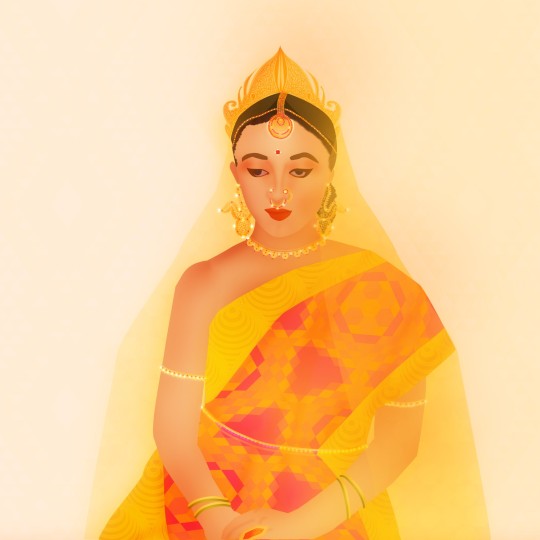
Rukmini looked up at her husband. He stood at the very edge of the boat, the oar steady in his left hand, the other tucked behind him. In this hand, he held his famed panchajanya conch. He looked straight ahead. He wasn't looking at anything in particular, but at the same time, it was as if he saw everything, Rukmini noticed. There was a strange calm about him. He didn't look like a bloodthirsty warrior or a fraud like her brothers had warned her, but rather he seemed a dreamer. Behind his deep eyes, he spun a thousand dreams a minute, building new kingdoms and destroying them. His conch stood out against his dark complexion, a symbol simultaneously of his solemn visage and the storm that raged within, not quite unlike the very seas they crossed.
#krishna#hindu mythology#art#original artwork#digital painting#desi tumblr#mahabharat#shri krishna#rukmini#original writing#ehi murare#ashtabharya#women in mahabharata
28 notes
·
View notes
Text
Origin of Arjun's name

Arjun's name and respective codename itself came from the etymology of Mahabharata, the ancient epic of India.
Arjuna was the son of Kunti whose spiritual father was Indra Dev (the God of Lightning), but became the adopted son of King Pandu among his four sons (Yudhishthir, Bhima, Nakul and Sahadev). Arjun was depicted as a skilled archer from an early age, and played an important role throughout the campaign of the Mahabharata War.
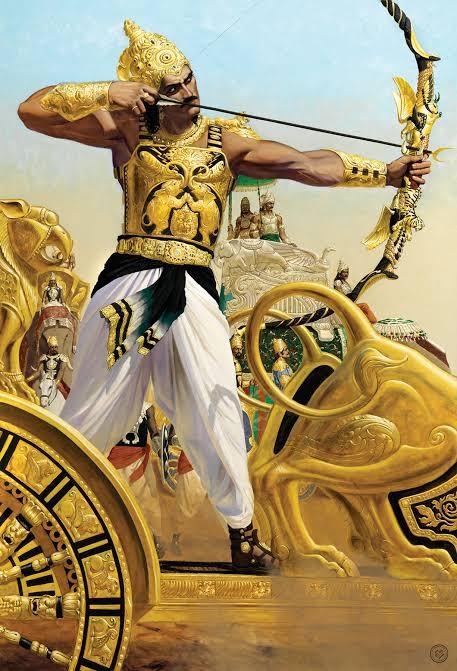
Arjun's name means to be "crystal clear, shiny and lustrous". In relation, it's about always being stuck to your aim and knowing what has to be done to hit the bullseye. Once the Captain finds a target, he'll do anything to fulfill it, even if it risks everything he had before. His aim towards it is "clear". He'd pick the gun, and fight. He'll not hesitate nor back off. He will hit the target.
His patch symbol is denoted as a "bow and arrow", which targets its desired aim. The Captain won't leave a single target behind, he'll eliminate it, destroy it, no matter what the cost.
#oc#oc background#oc names#original character#oc lore#my oc#indian oc#captain arjun#cod#call of duty#call of duty oc#cod mw#call of duty modern warfare#cod mw2#cod mw3#og mw timeline#reboot mw timeline
57 notes
·
View notes
Text
रे दानवीर—

कस्य धर्मम् अनुसरति?
भवान् कार्यं कस्य कृते करोति?
भवत: कर्तव्यं किम्? कर्तव्यं कस्य कृते?
O, generous one Whose path of life do you follow? For whom do you do your work? What is your duty? Who is your duty for?
(Alternate shots and thought process/explanation under the cut!)
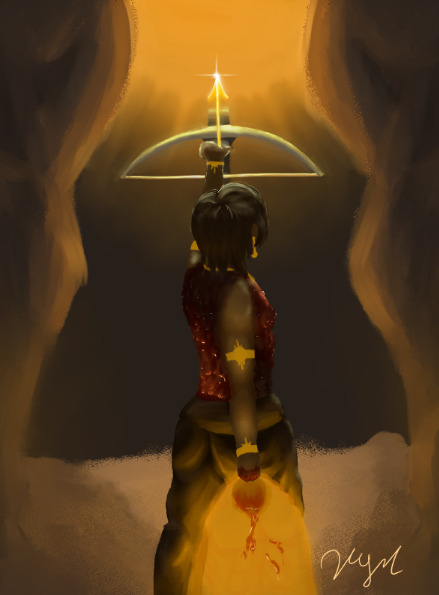
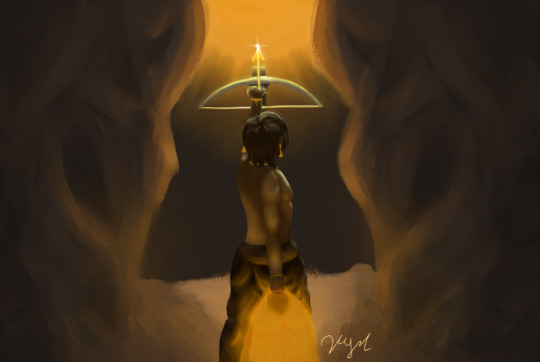

(Click for better quality – Tumblr kills it </3) Free to use/save with credit and/or a reblog!
OKAY. YAP TIME. This is a Hindu mythology/Mahabharata AU, and this art specifically is of Wolfwood as Karna. I'll explain who Karna is first + give context about his role in the Mahabharata, and then explain the symbolism and everything.
Who is Karna and what is his role in the story?
Karna was the illegitimate son of Kunti and Surya, the sun god. Due to being unmarried and young at the time, Kunti put Karna in a basket of sorts and allowed the river to carry him away where he was later found by his adoptive mother and father.
Thanks to his divine heritage, Karna was born with a kavach and kundal— a chest plate and earrings. These were immensely strong, even to the point of being unaffected by celestial weapons, and, most importantly, they were inherent to his being. I mean that very literally: the chest plate and earrings were literally parts of him. Taking them off would leave him bloodied and vulnerable (cough cough).
Eventually, through his prowess with archery, he made his way to the Kaurava palace–the Kauravas being the corrupted, power-hungry side of the conflict (oversimplification, but the Mahabharata is way too long for me to summarize here)–and became fast friends with Duryodhana, the leader of the 101 Kaurava cousins. Now, the issue with that is that his half-brothers, the Pandavas, were technically the rightful heirs to the kingdom, Hastinapura. This is where Karna's conflict begins: who does he have a responsibility towards? The family that housed and loved and fed him, despite the wrongdoings they were committing, or the family that was his birthright?
In the Mahabharata, Karna chooses the family who raised him, hurt by the fact that his mother gave him up. While this seems like a perfectly logical decision, the fact is that the Kauravas were cruel and deceitful— adharmi, or straying from the path of righteousness. In enabling and aiding them, when he had a responsibility to his blood family AND to keep the Kauravas from committing evils, Karna damned himself.
That isn't to say that he was a horrible person, however— he was notoriously humble and generous (which is the epithet that I used in the title!), incredibly dedicated to his cause and his family, and burdened with the knowledge that his birth mother gave him up. Karna is a morally grey character: put into his shoes, we, too, would struggle with choosing a side.
Leading up to Karna's death, during the war, Lord Indra, disguised as a brahmin, asked for his kavach and kundal. Karna gave them away without hesitation, leaving himself bloodied and vulnerable. This tremendous, selfless display of generosity is the main sticking point for so many people; how can a person so devoted and so generous be wholly evil?
I'm sure that idea rings true for many of you, since it's a point of contrition in Trigun, too. This leads me to the next part:
Why is Wolfwood Karna? What does this imply?
If you're familiar with Karna or you read my explanation up there, I'm sure you can see the connections now. Both Wolfwood and Karna struggle with choice— who do they have a duty towards? Karna has to choose between the two sides of his family and, symbolically, between right and wrong. Wolfwood has to choose between his obligation to Hopeland Orphanage (and, by extension, Knives as his contractor) and the obligation he brought upon himself in regards to Vash's ideals/quest. The conflict is near analogous: he's stuck between the people who raised and loved him, and the people who are working for a better future.
Another important thing to consider is Karna's generosity and how he, quite literally, gave someone the skin off his back. Wolfwood, too, is unerringly generous— he posits himself as selfish and mean, but he gave up everything for the people he cared about: his adolescence, his morals, his basic nature, his life. They are both so, so generous, and it leads to their downfalls.
Finally, the most important thing to remember is that neither Karna not Wolfwood are inherently good or bad. They're humans making very human choices. They're both selfish, yes, but they're also generous and kind and caring. In the end, Karna recognizes his mistakes and regrets what he's done, and Wolfwood, similarly, is forced to make peace with what he did and how his life has come to an end.
Artistic choices!
Wolfwood's arm bands and bracelets are gold and mimic both the Eye of Michael's insignia as well as the sun(s), which is a nod to Karna.
He's shown holding his kavach instead of wearing it to symbolize both his dedication and generosity (again, a nod to the original story), as well as to serve as his cause of death. He's forsaken his protection for what he believes in and wants to protect. In my original planning, the kavach and kundal were actually way more analogous to the EoM juice lol.
I replaced the Punisher with a crossbow because a giant cross-shaped gun would, unfortunately, be even more idiosyncratic than a crossbow (apparently ancient mainland India didn't have crossbows! Assam did; however, the Kurukshetra War happened in Haryana so boo hoo). Despite that, I tried to keep the coloring similar to the Punisher from Trigun (1998) as well as including a skull motif under the bow.
The pose is referenced from Wolfwood shooting up at the rubble during Badlands Rumble! I just modified it for the drama lol.
Wolfwood is pointing the crossbow at the sun for a purely Wolfwood reason (meaning it is NOT a reference to the Mahabharata). Despite his best efforts, he ended up backstabbing both of the twins in one way or another; you can imagine the sun as either brother, but I'd probably imagine it as Knives, since he "remade" Wolfwood, so he'd step into the role of Surya (Karna's father).
#trigun#trigun art#nicholas d. wolfwood#nicholas the punisher#my art#blood tw#mahabharata au/hindu mythology au#trigun au#this isnt a specific ww btw you can imagine him as whichever one you want#trigun maximum#trigun 98#trigun stampede#im soooo proud of bullshitting the anatomy so well. guys hmu if you wanna see the musculature sketches#also the text in Devanagari is sanskrit!! putting my 5+ years of sanskrit to good use frfr#anyway dont imagine Miss Melanie as Kunti. your heart WILL break#I also couldnt decide which epithet to go with for the longest time LMAO
18 notes
·
View notes
Text



Sri Ganesha! Jai Ganesha!
Ganesha ॐ Talon Abraxas
Ganesha, God Of Wisdom
"The great and peaceful ones live regenerating the world like the coming of the spring; having crossed the ocean of embodied existence themselves, they freely aid all others who seek to cross it. The very essence and inherent will of Mahatmas is to remove the suffering of others, just as the ambrosia-rayed moon of itself cools the earth heated by the intense rays of the sun." ~Shankaracharya
He who performs the maximum work with minimum labour.
It is said in Hindu tradition that Parvati, wife of Shiva and mother of Ganesha, saw the syllable AUM. Her powerful glance transformed the Sacred Word into coupling elephants which gave birth to Ganesha and then resumed the form of the AUM. Thus Ganesha, with elephant head and human body, possessed the AUM as his syllable, and at the dictate of the sage Vyasa, he set down the Word in symbolic and categorical form in the richly allegorical epic called the Mahabharata. In the process of performing this holy task, Ganesha became Ekadantin, the Single-Tusked One. When he entered into the alliance, it was stipulated that the sage would pour forth the stupendous epic into a lakh of stanzas, and that he must go on recording them at the same speed. The terms they entered into were equally marvellous. If the sage staggered in his inspired dictation, the writing faculty in the scribe would become permanently defunct. If the scribe were to halt or delay his composition, the articulate sage would become dumb. Both scribe and sage were fulfilling awesome tasks as if by divine dispensation. As customary in ancient India, Ganesha was writing on palm leaves with an iron stylus. Just when three-fourths of the work was over, the stylus snapped. Ganesha then and there broke his right tusk and used it as his pen without a moment's break in his work. The immortal undertaking was accomplished with solemn success and stands as an archetypal example of the teaching that no sacrifice is too great for a noble cause and that the resourceful know no impediments.
Ganesha is thus the Remover of Obstacles. Even devotees of Buddhism and Jainism propitiate him first, seeking his sanction in their invocation of their chosen deities. He is that aspect of Cosmic Intelligence which aids the awakening and growth of those who are divinely disposed. He apparently helps the wicked also, but ultimately arrests their untoward undertakings. In this sense Ganesha is called Vigneswara, the Lord of Obstructions. He is capable of creating hindrances as well as clearing off hindrances. Through either mode he brings good to all concerned. Sometimes what is sought after by the devotee is not sanctioned. The disappointment brought about thereby is no doubt poignant. But in due time it is realized that the seeming obstruction is a blessing in disguise. Vigneswara wields the affairs of the world in such a way that the greater evils of life are warded off through the intervention of lesser evils.
The ceremonial sanction and support of Vigneswara is sought after in all new undertakings. Whatever is undertaken ignoring the Lord of Wisdom is bound to meet with impediments, and therefore devotees circumambulate his image or perform such actions as knocking thrice on the head, holding the left ear with the right hand, right ear with the left hand, and sitting or standing as a mark of submission and obedience. In a child, such sanctification arouses the imagination and creates a living contact between the visible human and the invisible superhuman. It induces devotion in little children. It gives a practical shape to the urge in every child for a healthy and loving relationship with its comrades. Such acts as the giving of edibles dedicated to the deity and the sharing of their distribution amongst themselves become the means for the removal of obstruction through inherent selfishness.
The Enlightened Man invokes Ganesha through intense mental invocation. His inward prayer consists of the intention to act with the fervent wish that his undertaking be in tune with cosmic harmony and the Divine Will, and that if it should be counter to it, it might as well meet with the fate it deserves. Such a true devotee is deeply aware of the potent force that streams through Ganesha and recognizes that through success and failure alike he can learn progressively how to set his feet more firmly and squarely on the Path. He is also keenly appreciative of the symbolic attributes of the elephant-headed god. He realizes that the trunk of Ganesha is curved around his single tusk in the form of the Sacred Word as though to protect the essential potency of the remaining tusk. The power within the trunk is the sense of smell which in the elephant is the channel of experience par excellence. The symbolic significance of this is suggested in the yoga system wherein Muladhara, the root-centre of the mortal body, is related to the elephant, or Ganesha, as well as to the bottom of the spine and the elimination centre. The root-centre represents the earth and the sense of smell as well as cohesion, obstruction and bone. Thus Ganesha stands at the beginning of the pilgrimage through the chakra centres, and it is he who must be propitiated to remove all obstacles. In The Secret Doctrine the earth is spoken of in relation to the rudimentary sense of smell. The other senses are related to water, fire, air and ether and are said to be fused in the sense of smell, the last of the series to evolve. Related to this powerful sense is that form of memory associated with the psychic realm and also pertaining significantly to the libido. Ganesha, being a symbol for all such characteristics, embodies the powers of the Akashic and lower astral realm brought down to earth whereupon he stands at the entrance to the Path. He represents Divine Wisdom as well as worldly wisdom, the crucial link - or antaskarana - between them, and the timely manifestation of Brahma Vach in daily life. ~Hermes
The degree of success or failure are the landmarks the Masters have to follow, as they will constitute the barriers placed with your own hands between yourselves and those whom you have asked to be your teachers. The nearer you approach to the goal contemplated - the shorter the distance between the student and the Master. ~Mahatma K. H.
27 notes
·
View notes